The Book of Truths Read online
The characters and events portrayed in this book are fictitious. Any similarity to real persons, living or dead, is coincidental and not intended by the author.
Text copyright © 2013 by Bob Mayer
All rights reserved.
No part of this book may be reproduced, or stored in a retrieval system, or transmitted in any form or by any means, electronic, mechanical, photocopying, recording, or otherwise, without express written permission of the publisher.
Published by 47North
P.O. Box 400818
Las Vegas, NV 89140
ISBN-13: 9781477807293
ISBN-10: 1477807292
Library of Congress Catalog Number: 2013936765
CHAPTER 1
CHAPTER 2
CHAPTER 3
CHAPTER 4
CHAPTER 5
CHAPTER 6
CHAPTER 7
CHAPTER 8
CHAPTER 9
CHAPTER 10
CHAPTER 11
CHAPTER 12
CHAPTER 13
CHAPTER 14
CHAPTER 15
CHAPTER 16
CHAPTER 17
For more on…
AUTHOR’S NOTE
ABOUT THE AUTHOR
By Bob Mayer
Roland stood near the closed ramp of the Snake, rigged with parachute, M249 squad automatic weapon strapped tight to one side and dressed in a Level A hazmat suit. His fellow Nightstalkers made an over/under bet whether there actually was a nuke in the site he would be jumping down toward, and then whether it would go off when Roland landed on top of it.
Roland had big feet.
In the cargo bay, between the cockpit and the ramp where he waited, the other five members made their next bets… well, four, since Moms rarely joined any betting pool. She considered it unprofessional of a team leader to engage in pecuniary entanglements with team members. At least that’s the way Eagle, the pilot, explained it. On the other hand, maybe she had more important things on her mind, like the possibility of a nuke going off.
The ones taking the over on the detonation didn’t contemplate that none of them would be around to collect if they won.
“Fifteen minutes,” Eagle warned over the team net from the cockpit. “Depressurizing in two.”
“Check oxygen,” Nada ordered. All five in the cargo bay made sure their rigs were pumping oxygen into their hazmat suits from the internal bottles, then gave Nada the thumbs-up. “Ready back here,” he informed Eagle.
Moms held up a finger, cutting the betting chatter on the team net. Her head was cocked slightly to the side, which indicated she was listening in on the secure frequency back to the Ranch outside of Area 51. Which meant she was being briefed by their boss, Ms. Jones.
After thirty seconds, she nodded and spoke on the team net. “Doc, are you getting the alert message Ms. Jones forwarded?”
Doc was seated toward the front of the cargo bay, a laptop open. He’d pulled off his hazmat gloves so he could work the mouse pad and keyboard. “Yes. I have it,” he said in his clipped Indian accent. “It is most strange. I have never seen this alert code before. Rather archaic.”
“Figure it out,” Moms said. “ASAP.”
“Where did the alert show up?” Doc asked as he typed. “Are we certain it’s nuclear related?”
“The indicator came on in the old command and control bunker at the Strategic Air and Space Museum at Offutt Air Force Base,” Moms said.
“That explains the archaic,” Eagle said from the cockpit.
“It’s a nuke,” Nada said glumly, which was his version of happy.
How it had started appeared to be the way many Nightstalker missions began: by accident, after stupidity, following just plain government incompetence. If one had asked Moms, she would have quoted, and often did, the exact time and date it all started—both the nuclear problems and the concept of the Nightstalkers—at 05:29:21 on the sixteenth of July, 1945, at the Trinity Test Site in New Mexico—when and where the first atomic weapon was detonated.
She was more correct than she realized.
The scientists who’d labored through the dark days of World War II and put the first bomb together also had a betting pool as the countdown to the test began on that warm July morning in the desert. The low was that it would be a dud, the high being a chain reaction ignition of the atmosphere with the resulting incineration of the entire surface of the planet. They didn’t think the latter likely but a few still took the high. Someone always takes the high. The fact there was even the slightest possibility that the world would be destroyed did not stop them, just as the dire warnings that firing up the Large Hadron Collider sixty-three years later in Switzerland might possibly open a black hole and consume the planet were ignored. The scientists in New Mexico can be cut some slack because there was a World War raging, but Switzerland?
The ultimate winner at Trinity, after all the readings were tallied and the world was not incinerated, was a physicist who picked 18 kilotons as the yield.
But that’s much too far to go back and too vague to explain why the Snake was flying over Nebraska, about to jettison its team of highly trained covert operatives over an abandoned ballistic missile launch control complex. Closer in time and space, only six hours earlier, in the part of Nebraska that was the middle of nowhere—which, unfortunately, most of Nebraska is—was a woman named Peggy Sue. (Really, her mom had loved that movie.) She was innocently hanging clothes she’d just finished hand-washing to dry over an old rubber-coated pipe.
But when that pipe is in a supposedly defunct launch control center (LCC) that had been auctioned off (only one bidder, so not much of an auction), the odds of such an event went from impossible to ridiculous. And the US government often ran on ridiculous, so that meant it was quite possible.
Ignorant of what she’d just initiated, Peggy Sue JoHansen was thinking she didn’t like the underground facility much to start with. She was beginning to feel the same way about her husband of four months, six days, and, checking her watch, a few too many hours. They’d gotten married in the passion of pending annihilation, just before the last “end of the world” deadline. She was beginning to forget which one exactly as there’d been three since, and when the world had not ended, well, here they were.
It was one of the conundrums of being a doomsdayer to actually not have doom.
As she draped another pair of his tattered jeans over the pipe, she heard him thudding down the eight-story stairwell, one heavy footfall after another as he hauled two more cases of bottled water. He bought a Blazer full of water with each trip to Sam’s over in Omaha, and she knew from weary experience it took him thirty-two trips to bring it all inside.
They had plenty of bottled water and she no longer offered to help.
That their new home, the LCC, had come without running water was just one of Peggy Sue’s many gripes.
Another was that the only warmth came from several electric heaters scattered about, which barely put out enough heat to keep the pants on the pipe from freezing.
She was soon going to have more.
At the same time that Peggy Sue was laying cold, soaking clothes over a rubber-coated pipe, not too far away (in Nebraska terms, far in Manhattan terms) on Offutt Air Force Base outside of Omaha, Horace Egan combed his hair, running the brush lightly across his scalp twenty times. No more. No less.
Every action was done to exacting standards, the way he’d lived his life for the past seventy-two years.
In most areas.
He slid the brush with depressingly little resistance through the few white wisps of what had once been his best feature: a gloriously thick head of hair that had earned him the call sign Samson back in the day when he was still allowed in the
cockpit. When on active duty, he’d had his hair trimmed every other day so that it was always just on the edge of regulations. As he was part of the air force, that meant its length exceeded what the army or marines would have allowed, but probably would have passed muster in the navy.
Then he brushed his teeth. He had his mouth mentally cordoned off into sectors, each the width of the brush, and he took the sectors with the same number of strokes, moving right to left, top to bottom, left to right, and then done. Flossing. Then mouthwash.
His teeth looked good in the mirror. The hair was a different story because the current scarcity revealed scars and divots from decades of ducking not-quite-enough under too many things, usually wings festooned with bombs and fuel tanks or the edges of hatches leading into all sorts of airplanes.
He left the washroom only after carefully drying the sink and faucet (“Ready for inspection, SIR!”—old habits died hard), and walked out into the dim lights of the closing museum, the dim being the signal for all to leave. All being the four who’d wandered in, probably after taking the wrong turn on the interstate: a family led by an overweight father and a bored mother dragging two kids who’d spent the entire time trying to get on their smart phones, bitching about the lack of reception. Egan thought the term “smart” apt, since the phones were most likely smarter than their two slack-jawed users. He had little hope for the future of the country if those two were any indication. It was the only solace he took out of being old: He wouldn’t be around to see what the next generation screwed up. The Greatest Generation was about done, the next greatest was teetering like Egan, and God help America after that.
He paused to take in the collection of planes positioned around the cavernous hangar floor. He could fly pretty much everything in the place and sometimes he didn’t know if it was irony that he and the machines were both too old to fly or just plain depression. But it was an honor to have done so much, because in the end, they’d been successful. There’d been no nuclear exchange during the Cold War because of men like Colonel Horace Egan, USAF Retired, and planes like these. The Greatest Generation had won World War II, but Egan’s generation had won the Cold War, and they’d gotten little recognition for it.
That was their story and they were sticking to it.
This was the museum for the Strategic Air Command, although the name had recently been changed to the Strategic Air and Space Museum, trying to posture a little less ominously to the public. Not that the museum drew any more action. The air force had even done away with SAC, merging it with TAC, Tactical Air Command, into the ACC, Air Combat Command. All those letters meant nothing to civilians, but to lose their cherished organizational designation was a deep blow to those who had served for years and lost comrades-in-arms.
Egan not only knew the numerical nomenclature of every craft, but could also rattle off the nickname and story behind each, knowing many of their secrets.
The most dominating plane in the hangar was the B-36 “Peacemaker” (the military has an odd way of naming tools of death with opposite-sounding names), the largest mass-produced propeller aircraft ever built. It was also obsolete before its first flight in 1946 as jet fighters took over the air after World War II. It is a maxim of military thinking that armies (and air forces) are always preparing to fight the last war. The B-36 faced the future as an attempt to give the United States a plane that could fly to the Soviet Union, drop the oversized atomic bomb of its time, and make it back.
It was damn nice of high command to factor in the making it back part. Actually a rarity in military planning at the strategic level.
Egan walked over to the plane and gazed up at the nose looming above him while he unconsciously rubbed one of the scars on his head. He’d gotten that one as a seventeen-year-old crewman bailing out of a B-36 en route from Eielson Air Force Base, Alaska, to Carswell Air Force Base near Fort Worth, Texas. They’d lost three of the six engines over British Columbia in a storm. Combined with severe weather and icing, they’d been forced to bail out.
After, of course, dumping their heavy load, a nuclear warhead.
The official after-action report, classified Top Secret and only recently declassified, stated that the warhead was a dummy with conventional explosives.
That was the lie from the beginning and still was to this day if one checked Wikipedia. What is true is that it was the first nuclear “incident” where a weapon was reported lost.
The report also stated that the warhead had been dumped over the ocean, with the conventional explosives detonating on impact.
That was a double lie. They’d dropped the bomb over land. And it had not exploded on impact. It had drifted down underneath its large main parachute.
The updated report still claimed that the weapon was never recovered.
That was the final lie.
Egan knew it had been recovered and he’d seen who had recovered it and to the day he died he would never speak of it to anyone because even now, so many years later, he knew if he did, someone would come, and his retirement would shift from “still breathing and telling silly war stories” to “deceased: no check need be issued anymore.”
Shaking himself out of memories, where he seemed to get lost more and more each day, he spotted the wife of the VIP standing by a B-52, the workhorse that replaced the B-36 and was still flying. Most of the B-52 bombers in the air were older than their crews.
Egan ignored that he easily could be her grandfather because getting some action wasn’t what he sought. At least that’s what he consciously told himself. But he was still a man, and he was still breathing, and hot blood still coursed through his veins, so of course it was what he sought on some level. On a deeper, visceral level, he was looking for something more mundane, which is why he volunteered at the museum (besides having no family, hating daytime TV, and having a right shoulder too damaged to play golf anymore). He wanted admiration, and that took some work at his age. He got the ritual respect given to elders, but admiration was a tougher objective. He didn’t know why her husband, the VIP, wasn’t here yet, but a pilot always took to the attack during a window of opportunity.
He’d have to tell her stories (but not about British Columbia and the nuke). Still he had plenty of others, most true, told in so many variations even he wasn’t certain anymore what the facts were. But what did it matter? The goal was to get her to understand how special he’d once been. Old pilots never die, they just have to work harder for the ego boost that used to be there for him every day, issued with the leather jacket and the crumpled cap and the silver wings, rewards for facing death every time the wheels left the ground.
He left the B-36 and headed toward the B-52 and the young woman, preparing his attack approach. He reflected that it was strange how he’d forgotten most of the missions, especially the combat bombing ones dealing death from high in the sky, but not one piece of tail that he’d ever gotten. When he was young his mind had been full of flying, but now it was full of memories of blondes and brunettes and Asians and African Americans. They had full breasts or just enough. Bodies ranging from skinny to voluptuous; blue-eyed, green-eyed, black-eyed, brown-eyed. He’d done them all. They’d been glorious, every single damn one of them, and he missed them more with each passing day.
It never occurred to him to wonder why none had ever stayed at his side.
Maybe because the next, not yet discovered one had always been potentially more glorious?
As he got closer he realized, okay, so she wasn’t so young, but definitely a trophy wife, a second one for the old businessman who made something the government liked having and thus rated the after-hours personal tour. Still, she was holding on well to her twenties in her midthirties with the dyed hair, tight body, and expensive clothing. And Botox, surgery, and whatever else women did to hold on.
Egan had his pills to hold on, in case the occasion should arise.
Lately not much had risen, but he was always hopeful and she was alone. A gentleman would not send his wife une
scorted, so that was one strike against the husband. Egan had learned, from decades of experience in seducing other men’s wives, that if you could get them to three strikes, one could most likely get to first base. He paused as that twisted metaphor confused him for a few moments, then shrugged it off as he shrugged off a lot of thoughts lately.
As he came up beside her, he allowed himself to put his hand on the small of her back, one of the few perks of being old. Her very small and lovely back.
She had her hand on the ladder that led up into the belly of the beast.
“Colonel Egan.” She nodded at him.
“Mrs. Floyd.”
“I never imagined these planes were so big.”
“Size isn’t everything, Mrs. Floyd.”
She glanced at him, a single, perfectly maintained eyebrow, arched.
“Where would you like to start?” Egan asked, gesturing with a flourish at the sprawling facility.
“Why don’t you wait ten minutes?” Mrs. Floyd responded.
“Why?”
“For my husband. The tour is really for him, isn’t it?”
“I suppose, but I’m sort of getting over the idea, if you know what I mean.”
A spark lit in his mind when she responded to the obscure reference.
“There’s a speed limit in this town, Colonel. Forty-five miles an hour.”
Egan grinned as he made the run toward first base, which in his case was more like a shuffle. “How fast was I going?”
“I’d say around ninety.”
So she wasn’t just a pretty face and tight body. “Suppose you get down off your motorcycle and give me a ticket.”
Mrs. Floyd smiled and stepped away from the hand on her back. “Suppose I let you off with a warning this time?”
First base seemed a little farther away. “Suppose it doesn’t take?”
“Suppose I have to whack you over the knuckles?”
“Suppose I burst out crying and put my head on your shoulder.”
“Suppose you try putting it on my husband’s shoulder.” And then she went off script. “Really, Colonel. He’ll be here shortly.”

 Independence Day
Independence Day Invasion
Invasion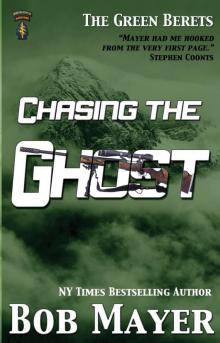 Chasing the Ghost
Chasing the Ghost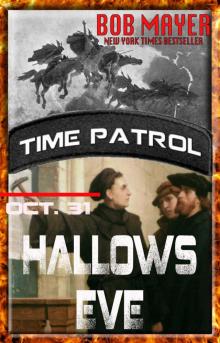 Hallows Eve
Hallows Eve New York Minute
New York Minute Valentines Day
Valentines Day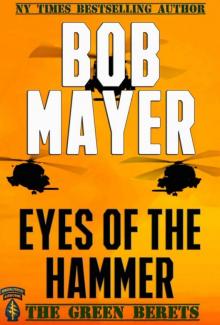 Eyes of the Hammer
Eyes of the Hammer Walk on the Wild Side
Walk on the Wild Side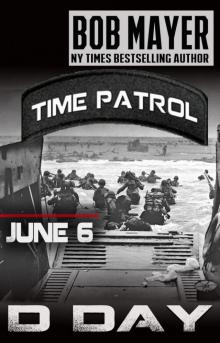 D-Day
D-Day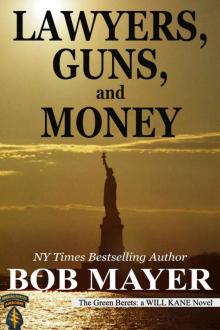 Lawyers, Guns and Money
Lawyers, Guns and Money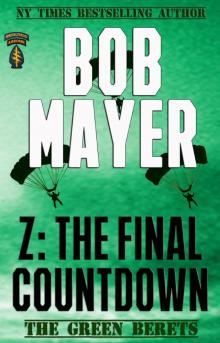 Z: The Final Countdown
Z: The Final Countdown Redemption: Area 51, #10
Redemption: Area 51, #10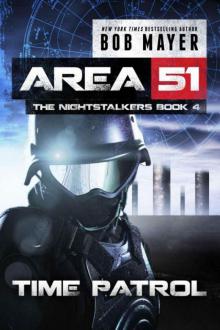 Time Patrol
Time Patrol Interstellar
Interstellar Sumter to Shiloh
Sumter to Shiloh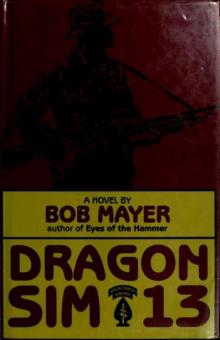 Dragon Sim-13
Dragon Sim-13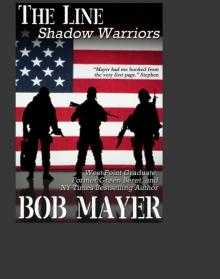 The Line
The Line Omega Missile (Shadow Warriors)
Omega Missile (Shadow Warriors)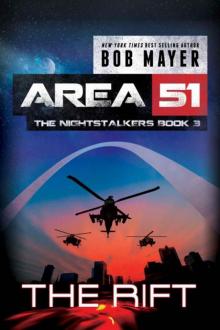 The Rift
The Rift The Jefferson Allegiance
The Jefferson Allegiance Project Aura
Project Aura Synbat
Synbat Ides of March (Time Patrol)
Ides of March (Time Patrol)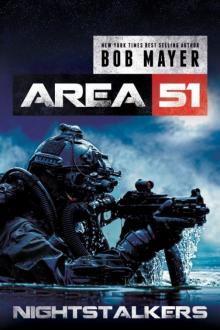 Nightstalkers a5-10
Nightstalkers a5-10 Lost Girls tc-2
Lost Girls tc-2 West Point to Mexico
West Point to Mexico Mexico to Sumter
Mexico to Sumter Area 51_Invasion
Area 51_Invasion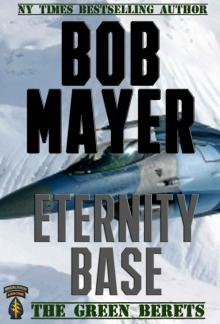 Eternity Base
Eternity Base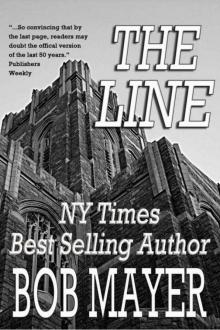 The Line bo-2
The Line bo-2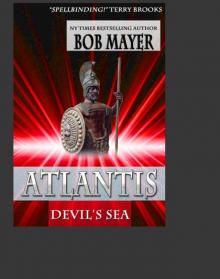 Atlantis Gate
Atlantis Gate I, Judas
I, Judas Area 51_Redemption
Area 51_Redemption Bodyguard of Lies
Bodyguard of Lies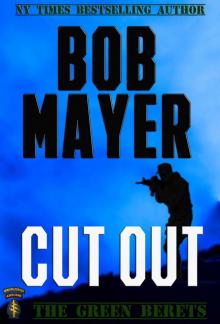 Cut Out
Cut Out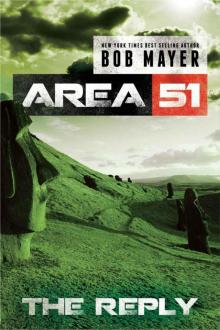 The Reply (Area 51 Series Book 2)
The Reply (Area 51 Series Book 2)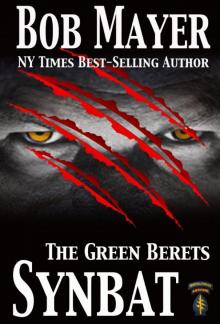 Synbat tgb-3
Synbat tgb-3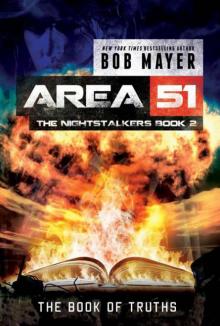 The Book of Truths a5tn-2
The Book of Truths a5tn-2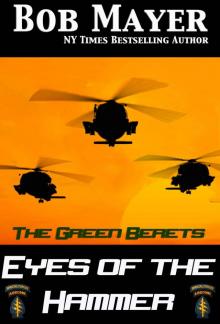 Eyes of the Hammer (The Green Beret Series)
Eyes of the Hammer (The Green Beret Series)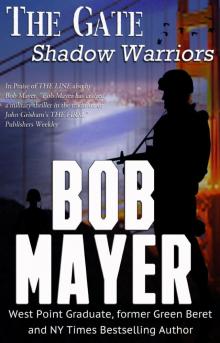 The Gate
The Gate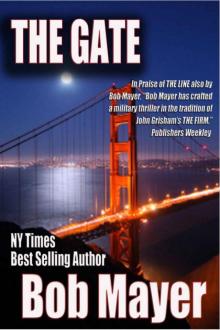 The Gate bo-1
The Gate bo-1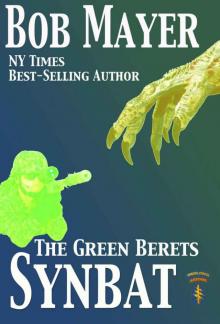 Synbat v5
Synbat v5 Omega Sanction
Omega Sanction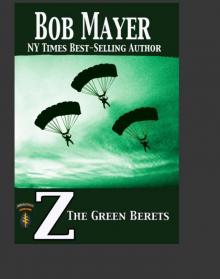 Z
Z Chasing the Son
Chasing the Son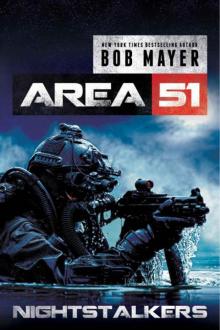 Nightstalkers
Nightstalkers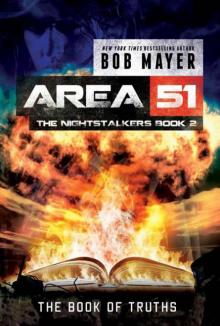 The Book of Truths
The Book of Truths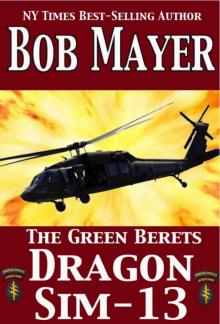 Dragon Sim-13 tgb-2
Dragon Sim-13 tgb-2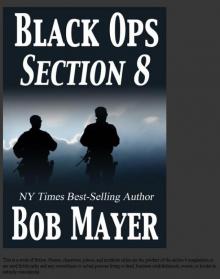 Section 8
Section 8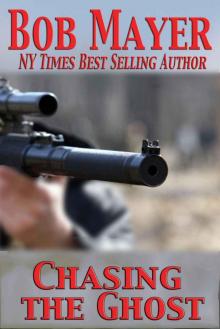 Chasing the Ghost v5
Chasing the Ghost v5 Psychic Warrior
Psychic Warrior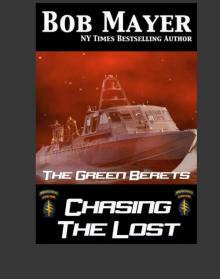 Chasing the Lost
Chasing the Lost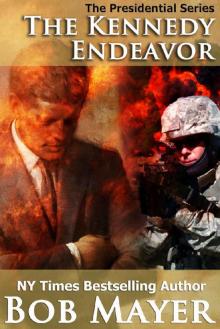 The Kennedy Endeavor (Presidential Series Book 2)
The Kennedy Endeavor (Presidential Series Book 2)